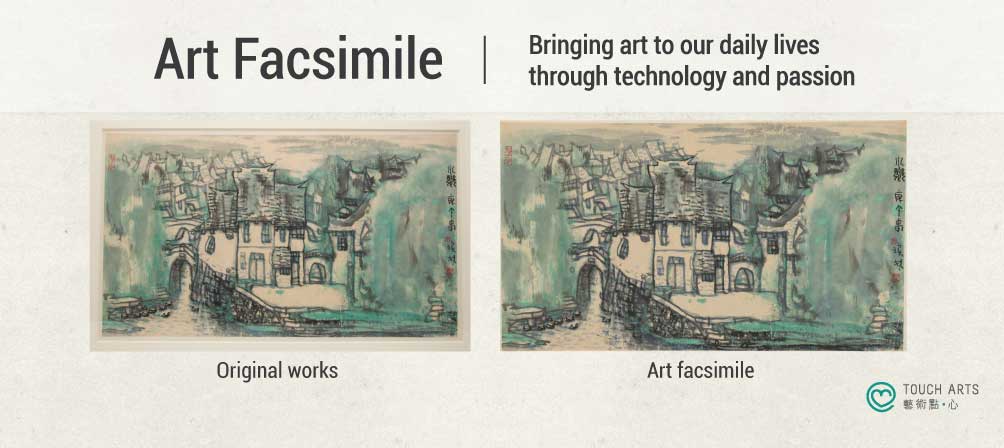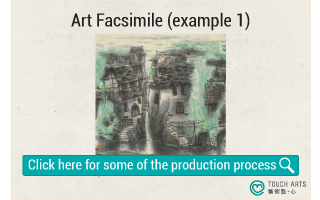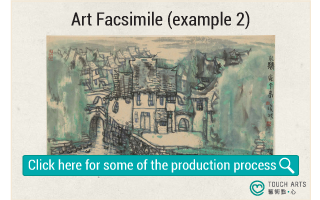Feature
Art Facsimile – Bringing art to our daily lives through technology and passion

Bringing art to our lives
Original artworks tend to be very expensive, well over hundreds of thousands of dollars, and are not generally affordable. With a fraction of the original artwork's price, you can have a limited edition facsimile of great artwork, which resembles the original and it is not easy to spot the difference.
The art gallery owner, Kim, who represents Malaysian artist Lam Siong Onn’s facsimile works said, “Lam Siong Onn likes to create paintings on Malaysian daily lives. His works gives you a sense of tranquility and it will make life more beautiful if you have it hanged in your room, so that you can appreciate it after a tiring day at work. He excels in simplifying complicated images, with a touch of abstract style. To reproduce the fine details of variegated patches and the effect of watercolor paints infiltrating on paper, not only do we need to purchase the exact same paper from France, but also have to be painstakingly refine the colour numerous times.
“Customers buy art facsimile because they can own a piece of great artwork at a much more affordable price. The facsimile is over 90% similar to the original artwork, plus the artist will specify the limited quantity and sign on it.” Not only can customers appreciate the facsimile painting at home, but they can also share it with their friends.
A new way of promoting art
Some of the museums in China have also produced art facsimiles for their collections. For example, some “national treasure grade” collections dating back to Song Dynasty which is well over a thousand years ago cannot be displayed because they are very fragile and cannot be exposed to light and moisture. Through facsimile technology, reproductions of these cultural relics could be made for exhibitions and exchange with overseas museums, making these collections available for public appreciation.
Managing Director of “De Jian Tang”, Brenda, who has worked with several museums in China to create art facsimiles said, “Facsimile of ancient painting involves a lot of security issues and need to be handled with caution. As these ancient paintings are very fragile, we could not take them out of the museum. Entrusted by the museum, we carry out all the work with our machines brought inside the museum, and the museum staff is there to supervise the whole process. The aim is to create art facsimile that resemble the original works, hence we will reproduce all the fine details of these ink painting on xuan paper or silk, without any modifications”.
Art facsimile of these ancient paintings also facilitate academic study. Brenda mentioned. “In the past, academics can only study ancient paintings through the pictures in reference books as the original artworks are not accessible. With art facsimile, academics can now examine the fine details in composition and brushstrokes. Academics overseas can access these ancient paintings as some overseas university libraries have bought these art facsimiles.
“In addition, people who are interested in ancient paintings, like collectors, can increase their knowledge and understanding through art facsimile.”
Preserve the original; share with more people
Local artist, Lee Tze Leung hopes to preserve the original copy of his paintings and art facsimile can let more people appreciate art. He said, “There is always only one original painting, and sometimes, several friends would like to have the same painting. With art facsimile, I can give the facsimiles of the same piece of painting to my friends to enjoy.”
Brenda (MD of De Jian Tang) said, “Some people own ancient paintings but they are not displayed for various reasons. We have a client, a couple who bought a set of “Ukiyo-e” woodblock prints from Kyoto as an anniversary gift for their marriage, did not display these prints at home because they are very fragile. By making art facsimile of these prints, they can now display these facsimiles at home and share it with their friends.
“Grand-daughter of deceased artist, Huang Yao, set up a foundation for him. Once she found a set of artworks at his home, which has never been exposed. To catalogue and keep records of these works, she employs this art facsimile technology to scan them and save them for people to appreciate later.”
Many people may have heirlooms hidden in their homes, with art facsimile, these treasures could be well preserved and at the same time, the facsimile can be displayed at home, shared with friends and let quality artworks accessible to more people.
Reference:
De Jian Tang:www.djt-art.com
Affinity for ART:www.affinityforART.com



























